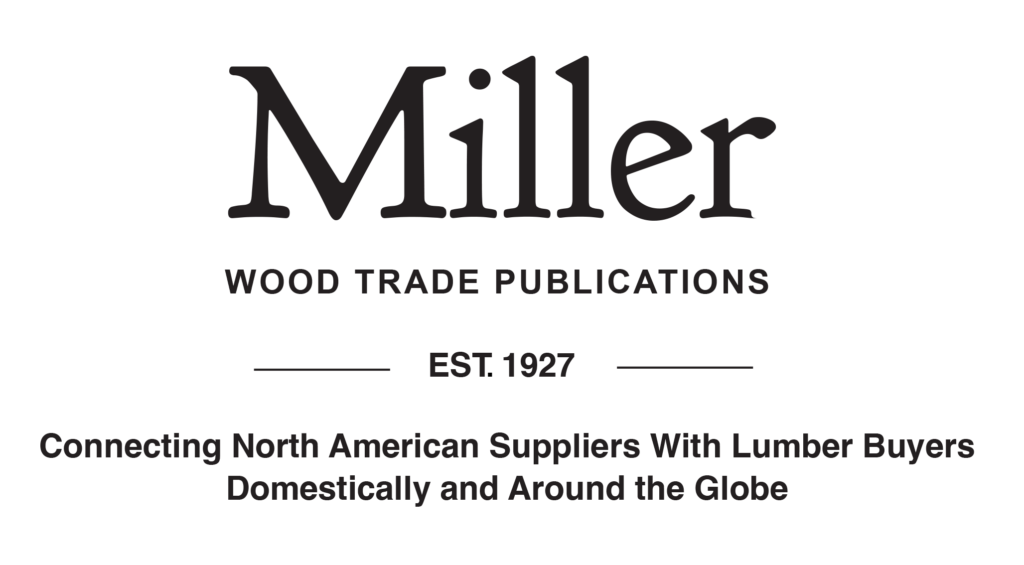Business Trends Abroad
Brazil: Forestry Sector Seeks Support To Mitigate Tariff Impact
The Federation of Industries of Mato Grosso (FIEMT) in partnership with the Center of Timber Producing and Exporting Industries of Mato Grosso (CIPEM) has assessed the impact of tariff increases imposed by the U.S. on Brazilian forest-based products.
The timber sector in Mato Grosso is highly dependent on the U.S. market which absorbs more than 26 percent of the State’s native timber production. Among the products, solid finished wood flooring stands out as it is exclusively exported to the U.S. with no viable market alternatives due to technical specifications unique to U.S. consumers.
The tariff increases are particularly critical for regions such as Juína, Colniza and Aripuanã municipalities where up to 80 percent of local jobs are in the timber industry at more than 180 companies.
Currently, the forest sector in Mato Grosso has 1,359 establishments and employs 10,869 direct workers primarily concentrated in sawmills (49 percent of the companies and 60 percent of the workforce). Furniture manufacturing accounts for 31 percent of establishments and 18 percent of jobs followed by other activities, such as wood-based panel production and the manufacturing of various wood products which together sustain thousands of jobs across the State.
Faced with the risk of economic losses, production line shutdowns and rising unemployment, FIEMT has proposed a joint letter from industry representatives and workers. The letter will be sent to State and Federal authorities requesting support and mitigation measures. The alliance among unions, associations and federations seeks to safeguard competitiveness, preserve jobs and ensure the continued economic contribution of the forest sector to Mato Grosso State.
Vietnam’s Wood Industry Considers U.S. Production To Counter Tariffs
Vietnam –Vietnam’s wood industry is exploring U.S.-based manufacturing as a strategy to offset recently imposed American tariffs, industry officials said.
Under a revised U.S. reciprocal tariff policy that took effect on Aug. 7, Vietnamese wood products now face a 19.1 percent tariff, part of a broader 20 percent rate applied to imports from the country. Despite the higher cost, Vietnam remains a dominant supplier of wood and wood products to the U.S., which accounted for 55.9 percent of the nation’s exports in the first seven months of 2025.
“The U.S. continues to be our most important wood export market,” said Ngo Sy Hoai, vice chairman and general secretary of the Vietnam Timber and Forest Products Association (Viforest).
Vietnam’s wood and wood product exports reached $9.67 billion in January–July 2025, up 8.3 percent year-on-year, contributing the largest share to the country’s $11.52 billion trade surplus in agricultural, forestry and fishery products, according to the Ministry of Agriculture and Environment.
In response to tariffs, Vietnamese companies are considering partnerships with U.S. firms to produce directly on American soil, leveraging skilled Vietnamese workers while mitigating the impact of tariffs. “A group of enterprises is seriously exploring this strategy,” Hoai said, noting that such moves would be difficult for individual companies to achieve alone.
Vietnam imports 70 – 80 percent of its timber materials, including $300 – 400 million worth annually from the U.S., a figure the industry hopes to raise to $600 million this year. Hoai said this could help reduce trade imbalances and provide a practical foundation for U.S.-based production.
Beyond the U.S., Vietnam is also looking to expand wood furniture exports to Japan, where demand for finished products is rising. Hoai emphasized that refreshing existing markets, alongside exploring new ones, would require coordinated support from the government.
U.S. Hardwood Lumber Exports To Mena Up 11 Percent In H1/2025
Mena –As of presstime, there has been an 11 percent year-on-year increase in the volume of U.S. hardwood lumber exports to the Middle East and North Africa (Mena) region, including Pakistan, for the first six months, according to the American Hardwood Export Council (AHEC).
As per the updated figures from the United States Department of Agriculture (USDA), the total shipments reached 45,369 cu.m., valued at $37.78 million, up 8 percent when compared to the same period in 2024.
The UAE retained its position as the region’s leading market, with stable demand for American species. Egypt, Lebanon and Israel posted strong double-digit growth, while Algeria and Bahrain recorded significant percentage increases from smaller bases, it stated.
Conversely, Turkey and Saudi Arabia experienced declines in both value and volume, reflecting local market adjustments, it added.
According to AHEC, Red Oak remained the top U.S. species shipped to Mena, thus accounting for a substantial share of overall exports.
Other prominent species included White Oak, Walnut and Ash, with notable Ash volumes continuing to find strong uptake among Turkish manufacturers involved in thermal modification. Tulipwood shipments also maintained a steady presence in several markets.
Roderick Wiles, the AHEC Regional Director, said, “While performance varied across individual markets, the first half of 2025 clearly demonstrates the enduring strength of Mena’s appetite for premium, sustainably sourced American hardwoods.
“In particular, the UAE, Egypt, Morocco and Lebanon are charting robust growth paths, fuelled by dynamic design trends, ongoing infrastructure investment, and a growing commitment to environmentally responsible materials,” he added.
Trump Says Furniture Tariffs Coming In Next 50 days
Global –As of early last month, U.S. President Donald Trump said that his administration has launched a federal investigation into furniture imports, with plans to impose tariffs within the next 50 days.
In 2024, the U.S. imported nearly $28 billion in furniture, according to data from the U.S. International Trade Commission analyzed by Supply Chain Dive. Top exporters included Vietnam, China, Malaysia, Taiwan, Canada, Italy, and Mexico.
In a post on Truth Social, Trump did not specify the rate of the planned duties, saying only that imported furniture would be “tariffed at a rate yet to be determined.”
The announcement comes shortly after the administration expanded U.S. tariffs on steel and aluminum to cover a wider range of household appliances, including refrigerators, dishwashers, stoves and ovens, laundry machines, and microwaves.
Official documentation of the furniture investigation has not yet been released. For previous sector-specific tariffs, such as those on steel and aluminum, the administration has relied on Section 232 investigations as the legal basis for implementation.
Phillip Blee, a research analyst at William Blair, said the rationale for targeting the furniture industry remains unclear. “Clearly the national security concern around foreign furniture production is a stretch,” he said.
The administration initiated a related review in March covering lumber, timber, and their derivative products, but results have not been announced and no tariffs have been enacted.










